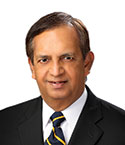First oil
Discovering discoveries
|
“The great discoveries are usually obvious.”—Phil Crosby, businessman and author, who contributed to management theory and quality management practices. Discoveries in the oil and gas industry are obvious all right, but only after the fact. Until then, most conventional exploration geologists would have thought, “What were these guys thinking?” Once an elephant (major discovery) takes place, it becomes a new exploration paradigm. Often, this leads to a bandwagon effect to find similar hydrocarbon traps. As these types of discoveries trail off, the industry awaits a new paradigm. The oil and gas industry has made significant hydrocarbon discoveries, first through oil seeps, then structural highs, followed by stratigraphic traps, flanks of salt domes, and now, through the fracturing of source rocks. In the game of golf, the very first shot determines all of the other shots that follow. Likewise, the nature of a discovery determines the characteristics of all the other E&P activities that follow, even midstream gathering facilities and downstream projects. Based on how much oil or gas is available, then it is a fairly straightforward process of establishing how the assets can be extracted, gathered, and then processed. The uncertainty associated with a discovery is quite significant in contrast with the reasonable risks of subsequent completion and production activities. My intention is not to detract from the challenges and creativity in the tasks downstream of a discovery, but simply to contrast the art and science of geology and geophysics (G&G) and the creative process that are hallmarks of a discovery against the practical aspects of completion and production engineering. The G&G uncertainty is inherently due to the complexity of subsurface formations. While sedimentary formations are laid in layers, the variable compaction over geologic time, and the shifting that occurs as a result of faults and fractures caused by seismic events over several geologic eras, create a high degree of uncertainty in subsurface structures and stratigraphy. The G&G disciplines have made significant advances in 3D seismic, well logging and MWD/LWD, but the best way to confirm the downhole geology is through wildcat drilling and analyzing physical core samples. An opportunity to gain an insight into the trials and triumphs of discoveries was available recently through the Discovery Thinking series at the AAPG (American Association of Petroleum Geologists) annual conference. The series is intended to “fill an important gap in how technical and professional skills combine to turn prospects into discoveries.” The 2014 AAPG conference in Houston featured a variety of speakers that covered discovery processes taking place in IOCs such as Shell, independents such as Pioneer Natural Resources, and NOCs such as Petrobras and Pemex. Antonio Escalera, deputy director of exploration and production at Pemex, spoke about the recent discoveries in ultra-deep water in the western Gulf of Mexico. At 500 MMboe, the Maximino oil discovery in Gulf of Mexico was Pemex’s third in the Perdido area. The trial-and-error nature of discoveries is evident in the fact that the successes came after 23 failed attempts. Persistence was also a key factor in the development of Appomattox, a frontier play in the Mesozoic formation of the Gulf of Mexico, as outlined by Kristin Wood, exploration manager for Shell. Micah Reasnor of Midland-based Pioneer Natural Resources explained how the company is applying the discovery thinking process honed in the Eagle Ford shale to find tremendous liquids-rich resources in the Permian basin. The company believes the Wolfcamp formation may hold as much as 50 Bboe of recoverable oil. This discovery certainly makes the unconventional the new conventional of the oil and gas industry. |



